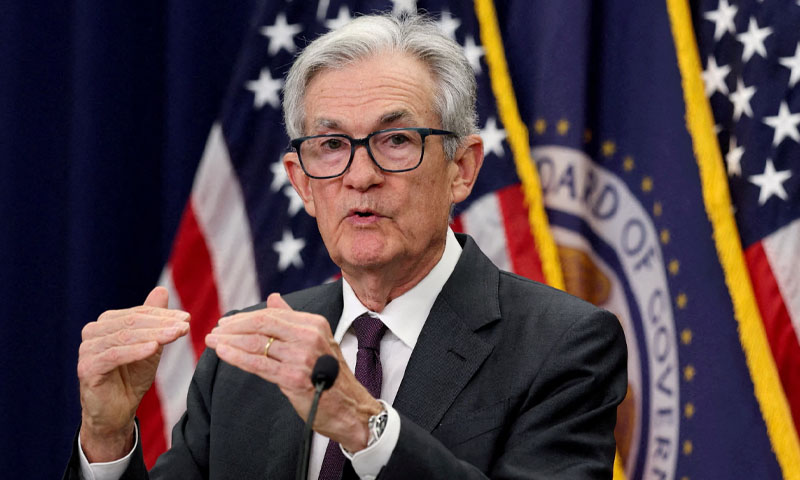- Web Desk
- Today
Fed cuts rates again as job market softens, data blackout clouds outlook
-

- Web Desk
- Oct 30, 2025

WEB DESK: The US Federal Reserve lowered its key interest rate for the second time in as many months, stepping up efforts to support a weakening labour market even as the government shutdown nears its one-month mark and official economic data remains unavailable.
In a move widely expected by economists, the central bank reduced its benchmark lending rate by 0.25 percentage points to a range of 3.75 percent to 4 percent, marking its lowest level in three years. The decision reflects the Fed’s growing unease over a slowdown in hiring and a slightly higher unemployment rate, despite inflation remaining above the bank’s 2 percent target.
However, Wednesday’s decision was not unanimous. Stephen Miran, currently on leave from his position at the White House’s Council of Economic Advisers, pushed for a larger half-point cut, while Kansas City Fed President Jeffrey Schmid voted to keep rates unchanged. The split vote underscored how divided policymakers have become over the path ahead.
Labour market in focus
Fed Chair Jerome Powell said the latest cut was aimed at shoring up a labour market that has shown signs of fatigue. “Job gains have slowed this year, and the market looks less dynamic and somewhat softer,” he told reporters. He attributed part of the weakness to lower immigration but added that the slowdown “does not appear to be accelerating”.
Private-sector data suggests the picture may be gloomier than officials admit. Payroll company ADP reported that the US economy lost 32,000 jobs in September, while the official government jobs report has been delayed due to the shutdown. Economists said this data gap leaves the central bank “flying blind” as it tries to assess the real state of the economy.
Meanwhile, inflation came in at 3 percent in September, slightly below expectations, easing pressure on the Fed to keep rates high. Economists at Bank of America said the softer reading gave policymakers the confidence to focus on boosting employment rather than fighting price rises.
End of balance sheet unwind
Alongside the rate cut, the Fed announced it will stop shrinking its balance sheet from December 1. The move ends more than three years of reducing holdings accumulated during the pandemic and earlier financial crises. Analysts said the decision reflects growing concerns about stress in credit markets.
Looking ahead, Powell warned investors not to assume another rate cut in December, saying future decisions will depend heavily on fresh economic data. “There were strongly differing views about how to proceed,” he said. “When you’re driving in the fog, you slow down.”
Despite political pressure from President Donald Trump, who has repeatedly urged the Fed to lower rates further, Powell maintained that decisions would remain data-driven. However, with the shutdown halting key economic releases, the Fed’s path forward remains uncertain.




